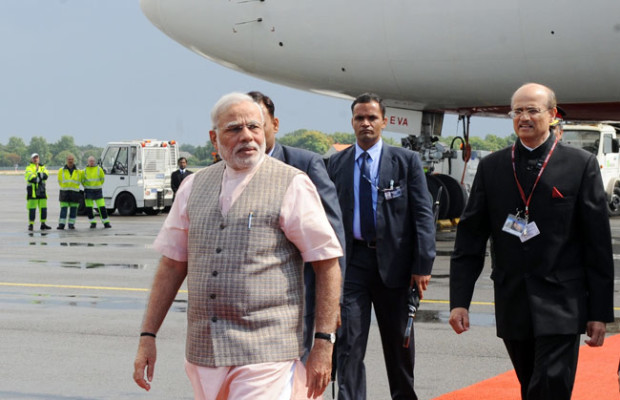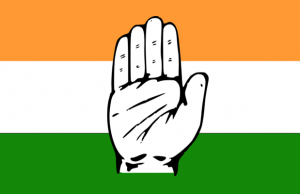RESHAPING THE INDIAN FOREIGN SERVICE

The challenges of global diplomacy require much more than what India is currently doing
A globetrotting Narendra Modi might have surprised many. But I was sure from the very beginning of his prime ministership that there are no foreign lands and it is only the traveler who is foreign.
Visiting around three dozen countries in one and a half years is a record by any standard for an Indian Prime Minister. Modi knows how important it is for him to make optimum use of the opportunity he has to create inroads in the Indian Foreign Services, especially in areas of international diplomacy, and among the Indian Diaspora. His all-out efforts in these areas are bound to pay dividends to him individually, to the Bhartiya Janta Party (BJP) politically, and to his mother-organisation Rashtriya Swayam Sewak Sangh (RSS) ideologically.
Today, the Ministry of External Affairs (MEA) has the highest per capita expenditure by the government on pay and allowances on its personnel. The average per person expenditure is Rs. 35 lakh. It is more than ten times that of the Home Ministry which spends Rs. 3 lakh per employee on an average. Even ministries such as Defence, Revenue, Health, and Atomic Energy spend in the range of 3.5 and 6.5 lakh rupees per employee. The Modi government feels that there is an urgent requirement to take several steps for strengthening the foreign services, including a sizable increase in the number of group A, B, and C officers. A different methodology of their training is also being prepared at the highest level.
In one year in office, Modi had decided to send the trainee officers of the Foreign Service to district towns of different states. Four months back, 33 officers of the 2014 batch were sent to state capitals as well as a district headquarter to familiarise themselves with development plans. Prior to this initiative in October last year, the MEA opened a new desk—the States Division—to liaise and facilitate outreach between foreign missions in New Delhi. Economic diplomacy is on the priority list and Indian missions abroad have been specifically tasked with seeking opportunities to advance India’s economic objectives. Missions have been asked to actively scout for opportunities to fulfil the national flagship initiatives like “Make in India”, “Digital India”, “Skill India”, “100 Smart cities project”, “Clean India”, and “Clean Ganga”. Since assuming office last May, Modi has been at the forefront of a refocused economic diplomacy. Diplomats who pick states with a sizeable diaspora living outside India—such as Kerala and Andhra Pradesh—have been asked to acquaint themselves with the particular problems faced by these groups. Currently, almost two-thirds of an IFS officer’s career is spent out of the country in diplomatic postings. Keeping this in mind, the MEA has advised trainee officers to remain in touch with the states’ governments and bureaucracy, as well as industry representatives, throughout their career to ensure that their information about the states remains updated. MEA is also working on a plan to send mid-level officers on such familiarisation tours.
The Modi government feels that the Indian Foreign Service is extremely understaffed.
The total number of Indian diplomats, at both the headquarters and in missions abroad, is around 900, that is the size of the diplomatic corps in the tiny New Zealand or Singapore. This is minuscule compared to another rising powers and fellow BRICS member state like Brazil, which has a 3000-strong diplomatic staff. Brazil recruited 400 diplomats over two years during 2009-2010 to meet its rising global aspirations. Neighbouring China has a strength of 6200 diplomats. While France has 6000 staff to manage its global affairs, the US has a 20000-strong diplomatic corps and the number of new recruits in the state department every year is as much as India’s total diplomatic strength.
Concerns about the serious under-resourcing of the Ministry of External Affairs, whose staff and budget are not commensurate with the scale and range of India’s external challenges and obligations in an increasingly globalised 21st century, are not new. In 2008, Shivshankar Menon, then the Foreign Secretary, moved a Cabinet Note proposing a doubling of his effective diplomatic strength. The government agreed to increase the cadre by 520 personnel (320 in the IFS category and 200 additional support staff), but the hierarchy-minded bureaucracy immediately stepped in to forestall any dramatic expansion which might have been necessary.
Modi now wants a complete change to outsource certain areas of diplomacy. He is also of the view that it cannot be for the IFS to hold all the major positions in Indian missions abroad, and talent from all the walks of society and spheres of bureaucracy must be given entry. Some well-informed sources have informally mentioned that Modi wants private experts also to take charge as heads of the missions. His government is also working on a plan to reform the IFS in South Block also. It is impractical that only five officers are assigned to cover all of the Americas, or that the number of Indian diplomats at our embassy in Washington has not changed since the days of our estrangement from Cold War America. It is also illogical that India has more diplomats posted in West European capitals than in East Asian ones.
The MEA’s financial resources are also far from commensurate with the globe-spanning tasks with which it is saddled. MEA’s budget is around $ 1.75 billion, of which the amount actually spent abroad is about 48 percent. The cost of running India’s embassies and overseas missions is around $ 300 million. Not every year witnesses an increase. There are periods when MEA’s actual expenditure patterns showed negative growth. The challenges of global diplomacy certainly need much more than what India is currently doing. But Modi government’s efforts to strengthen Indian diplomacy must not go totally unchecked as one of the distinguished features of Narendra Modi’s diplomacy in last 18 months has been making his presence strongly felt in the countries he visited using Indian Diaspora and the palpable unease in the corridors of MEA over the use of religion in diplomacy often finds expression in private conversations. This is the time when you cannot close your eyes to the things you don’t want to see in coming years.




You must be logged in to post a comment Login